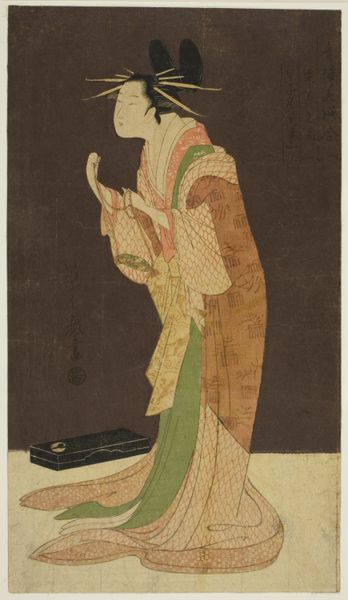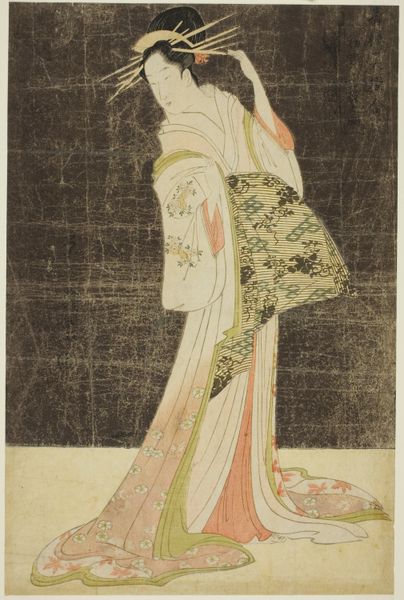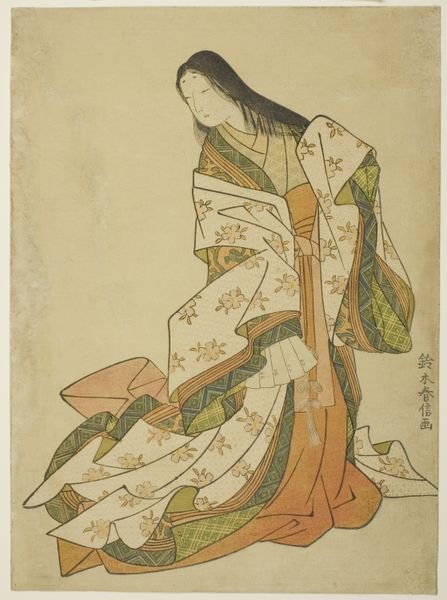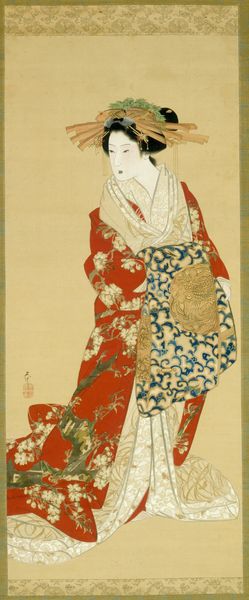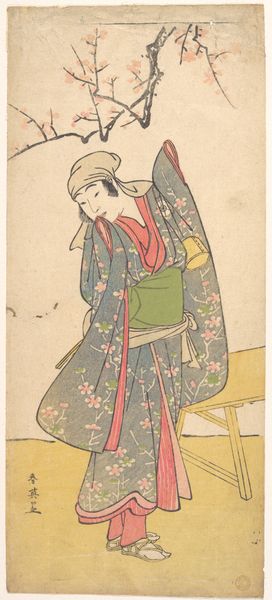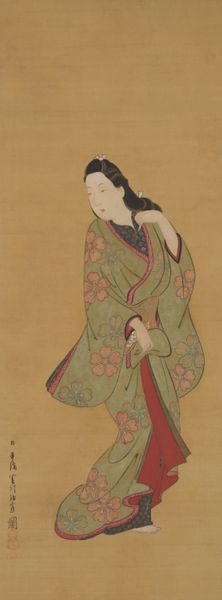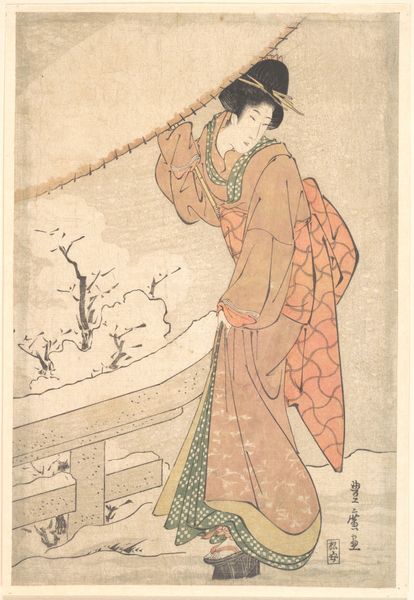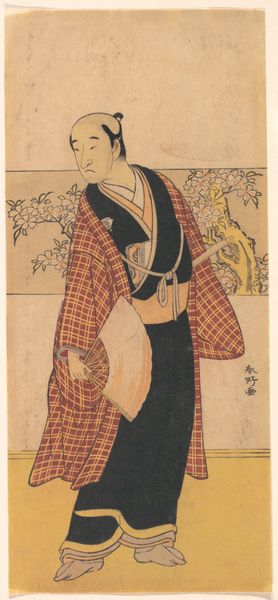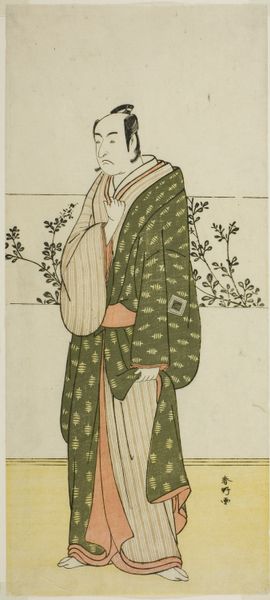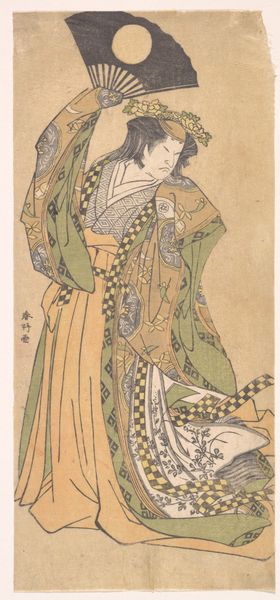
A Selection of Beauty from the Pleasure Quarters (Seiro bisen awase): Hanamurasaki of the Tamaya in Procession (Tamaya Hanamurasaki dochu no zu) c. 1795
0:00
0:00
#
portrait
# print
#
asian-art
#
ukiyo-e
#
genre-painting
Dimensions: 38.0 × 21.5 cm
Copyright: Public Domain
Curator: This woodblock print by Chōbunsai Eishi, created around 1795, depicts Hanamurasaki, a courtesan of the Tamaya house, in procession. It is entitled, "A Selection of Beauty from the Pleasure Quarters." Editor: The overall impression is one of restraint, almost sadness. The muted colors and her averted gaze evoke a sense of melancholy despite the beauty of her garments. Curator: Precisely. We have to remember the historical context of these women and ukiyo-e prints, these "pictures of the floating world." While ostensibly celebrating beauty and pleasure, they also represent a system of enforced servitude and the commodification of women within Edo society. Hanamurasaki’s gaze embodies a lack of agency. Editor: You can certainly see that encoded in the patterns she wears. The grapevines trailing on her robe strike me. Grapevines represent abundance, celebration even, echoing traditions going back to Greco-Roman times. Yet here, that symbolism feels bittersweet, contained, like her life is circumscribed by both luxury and limitation. Curator: Exactly. These prints became so popular precisely because of the burgeoning merchant class. They offered fantasies, yes, but also a reflection of social hierarchies. A woman's rank, accomplishments, beauty could all be quantified. It's vital that we analyze these representations of women within that paradigm, particularly those of the pleasure quarters, where women’s bodies were instruments for negotiating power dynamics. Editor: Do you think her slight upward gaze is an act of quiet rebellion? Maybe she is resisting those patriarchal forces? Curator: That's an intriguing interpretation, but given that such gazes in ukiyo-e traditions also signified coy reserve, a kind of demure modesty to meet patriarchal expectation. I believe that her placement within that specific societal structure cannot be extricated from her individual character. The fact that her procession here almost creates a static effect indicates she exists merely for viewers to imagine, consume, even fetishize. Editor: I find the artist’s hand so gentle that it makes this image all the more beautiful. We, today, should always analyze works like this one by reading between the cultural lines. The print also creates such dialogue with a sense of aesthetic distance.
Comments
No comments
Be the first to comment and join the conversation on the ultimate creative platform.
